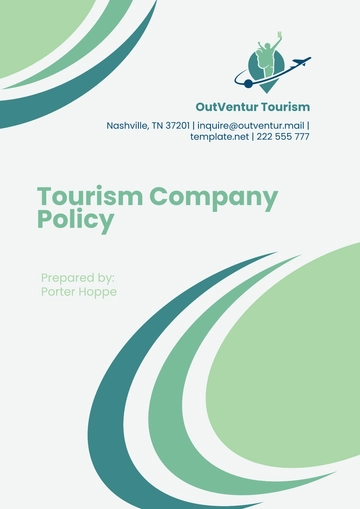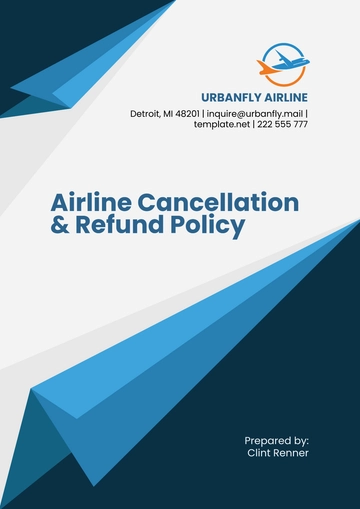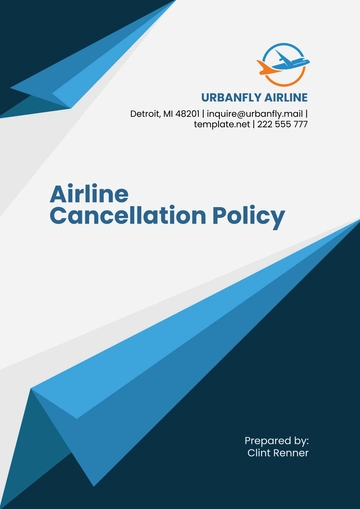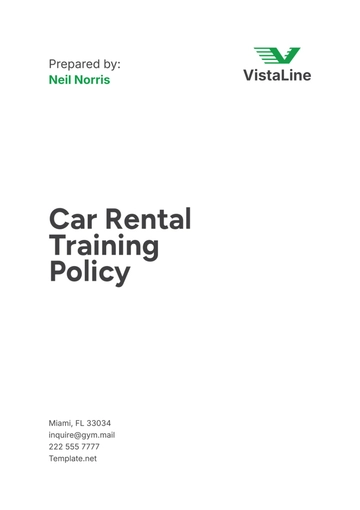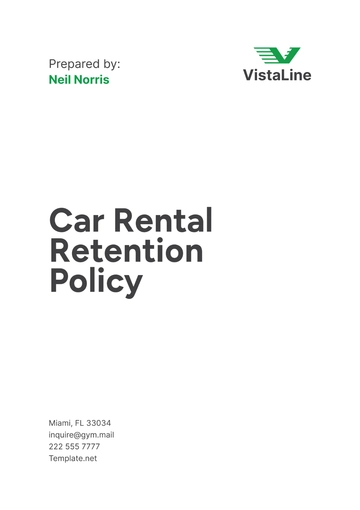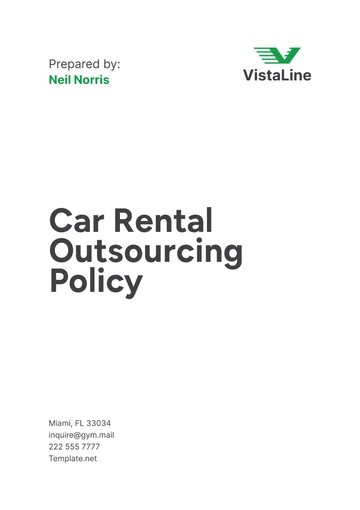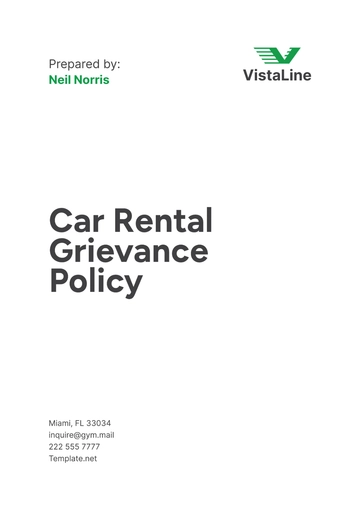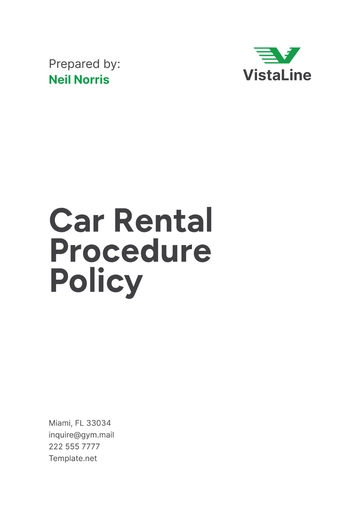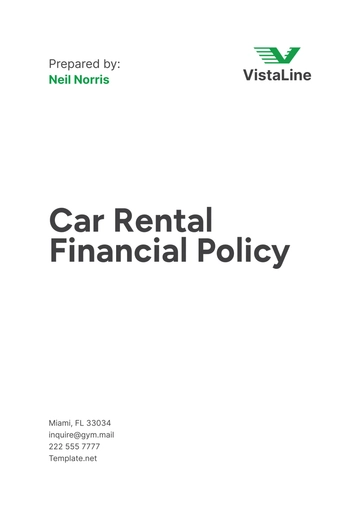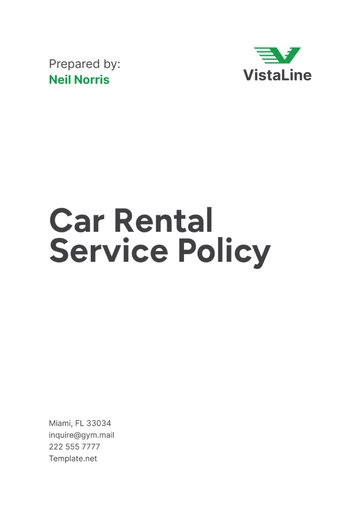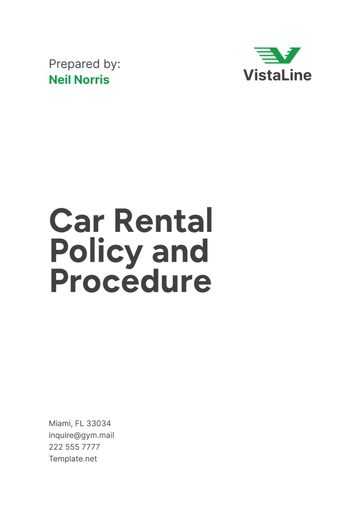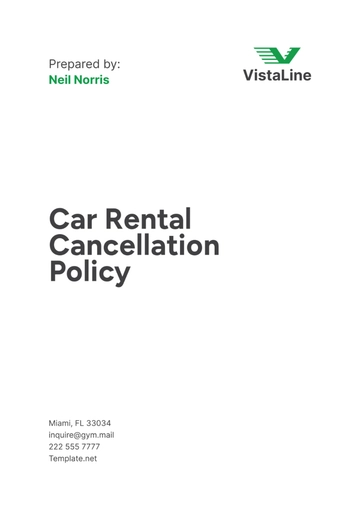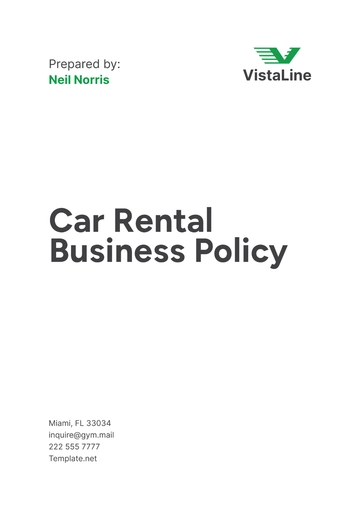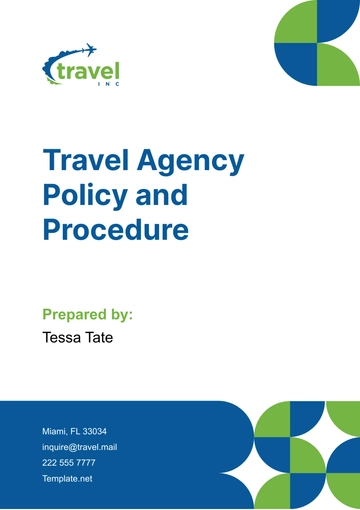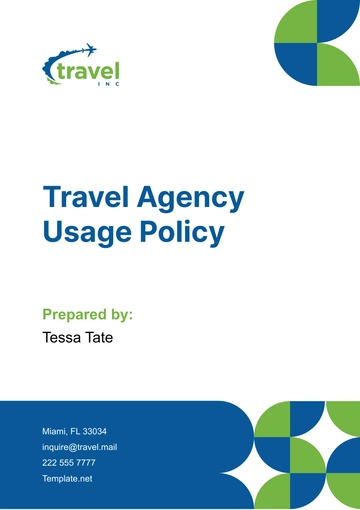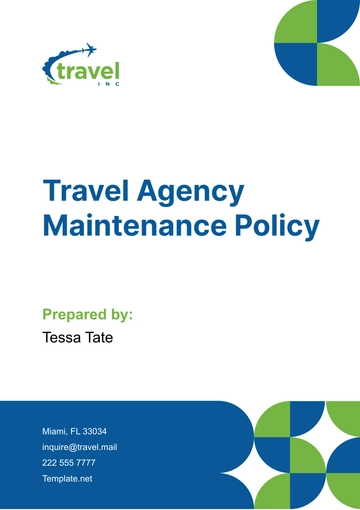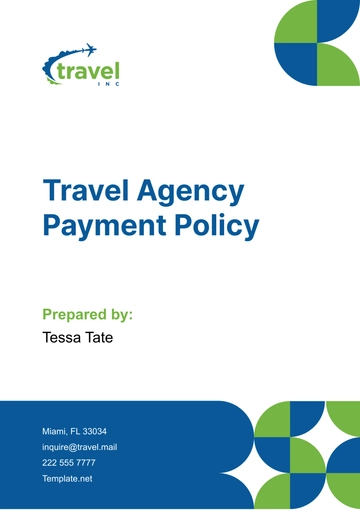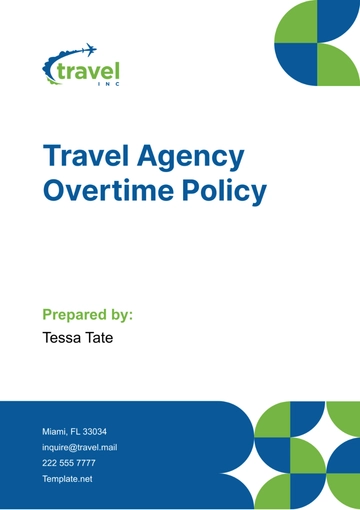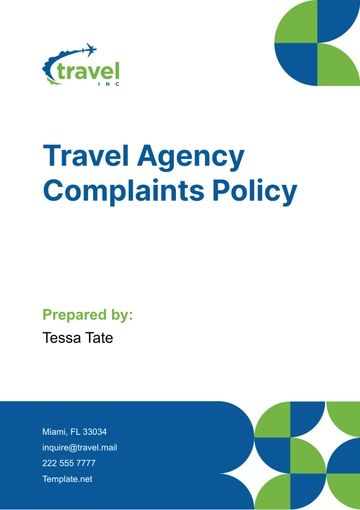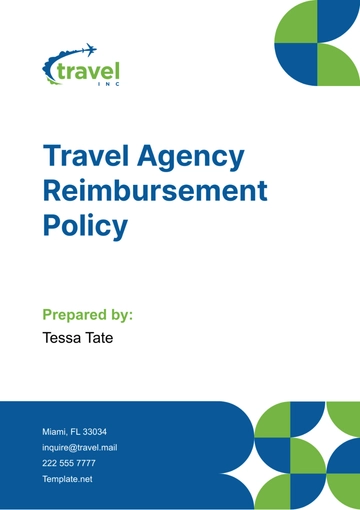Free Travel Agency Disciplinary Policy
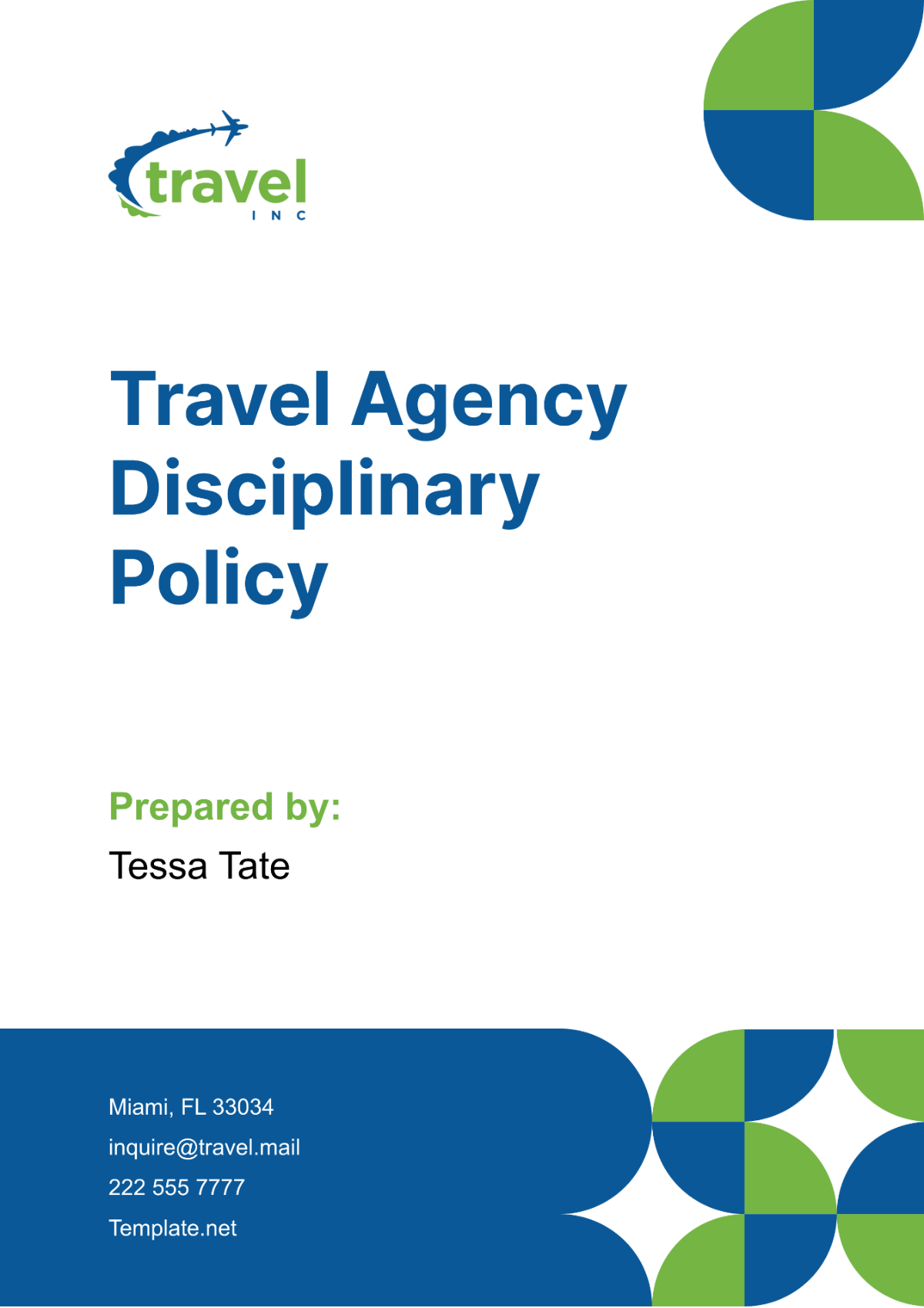
I. Introduction
A. Purpose
The purpose of this Disciplinary policy is to establish clear and fair procedures for addressing conduct that does not meet the expected and communicated standards of [Your Company Name].
Harmonious Environment: The policy aims to create a harmonious and productive work environment. This is crucial for the smooth operation of [Your Company Name] and for maintaining a positive atmosphere where all employees can thrive.
Professionalism and Respect: It seeks to promote professionalism and respect among all employees. This is essential for fostering a culture of mutual respect and dignity, which contributes to the overall success of [Your Company Name].
Guiding Framework: The policy serves as a guiding framework for managers and employees in handling disciplinary issues. It provides clear guidelines and procedures to ensure fairness and consistency in dealing with disciplinary matters.
Fair Decision-Making: The policy provides a framework for fair and consistent decision-making. This ensures that all disciplinary actions are justified and proportionate to the misconduct.
Upholding Standards: The policy encourages employees to uphold the agency’s values and standards. It underscores the importance of adhering to [Your Company Name]'s code of conduct and professional ethics.
B. Scope
This policy applies to all employees of [Your Company Name] regardless of position or status within the agency.
Coverage of Misconduct: The policy covers all forms of misconduct, including but not limited to, violations of agency rules, insubordination, and negligence. It provides clear definitions and examples of what constitutes misconduct.
Application Across Locations: It applies to all locations where the agency’s business is conducted. This includes all [Your Company Name] offices, client sites, and remote working locations.
Application During Working Hours: It is applicable during working hours, including breaks and overtime, and at agency-sponsored events. This ensures that the policy is upheld at all times.
Application to Communication: It extends to all forms of communication, including online and social media interactions. This ensures that all communication is professional and respectful.
Relevance to Actions and Behaviors: It is relevant to both individual and team actions and behaviors. This ensures that everyone is held accountable for their actions.
C. Target Audience
The target audience for this policy includes all employees, contractors, and consultants working on behalf of [Your Company Name].
All Employees: All employees, regardless of their role or seniority, are expected to comply with this policy. This ensures that everyone is held to the same standards.
Managers and Team Leaders: Managers and team leaders are responsible for ensuring their team members understand and adhere to this policy. They play a crucial role in enforcing the policy.
HR Personnel: HR personnel are tasked with overseeing the implementation of this policy and handling disciplinary procedures. They ensure that the policy is applied fairly and consistently.
Contractors and Consultants: Contractors and consultants are also expected to uphold the standards set out in this policy while working with or for [Your Company Name]. This ensures that all work conducted on behalf of the agency meets our standards.
Clients, Vendors, and Partners: Clients, vendors, and partners are encouraged to respect this policy when interacting with our employees. This helps to maintain a professional and respectful working relationship.
D. Policy Implementation
The implementation of this policy is a crucial aspect of maintaining discipline within [Your Company Name].
Training and Workshops: The policy is implemented through regular training sessions and workshops. These sessions are designed to ensure that all employees understand the policy and know how to adhere to it.
Policy Distribution: Employees are provided with a copy of the policy and are expected to read and understand it. This ensures that all employees are aware of the disciplinary procedures and their responsibilities.
Policy Updates: Any changes to the policy are communicated promptly to all employees. This ensures that all employees are up-to-date with the current disciplinary procedures.
Monitoring Compliance: Compliance with the policy is monitored and non-compliance is addressed promptly. This helps to maintain discipline and professionalism within [Your Company Name].
Feedback Mechanism: Feedback from employees is encouraged to continuously improve the policy. This allows [Your Company Name] to address any issues or concerns and make necessary improvements to the policy.
E. Legal Compliance
[Your Company Name] is committed to complying with all relevant laws and regulations in the implementation of this policy.
Compliance with Laws: The policy is designed in accordance with local, state, and federal laws. This ensures that [Your Company Name] is compliant with all legal requirements related to employee discipline.
Legal Disciplinary Actions: Any disciplinary actions taken are in compliance with legal requirements. This ensures that [Your Company Name] respects the rights of its employees and avoids any legal issues.
Legal Advice: Legal advice is sought when necessary to ensure compliance. This ensures that [Your Company Name] is always acting within the law when implementing disciplinary procedures.
Regular Policy Review: The policy is reviewed regularly to ensure it remains legally compliant. This ensures that [Your Company Name] is always up-to-date with any changes in the law.
Data Protection: Personal information is handled in accordance with data protection laws. This ensures that [Your Company Name] respects the privacy of its employees and protects their personal information.
II. Principles
Our disciplinary process is grounded in the following principles:
A. Consistency
All cases of disciplinary action will be handled consistently under the policies outlined. This means that similar offenses will receive similar penalties, regardless of the employee’s position or tenure.
Uniform Application: The same rules and standards apply to everyone. This ensures that no employee is unfairly singled out and that everyone is held to the same standards.
Consistent Process: The process for dealing with violations is the same for all employees. This ensures that everyone is treated fairly and that the process is transparent.
Proportional Consequences: The consequences for violations are consistent across the board. This means that the severity of the penalty matches the severity of the violation.
Objective Exceptions: Any exceptions to the rule are based on objective and justifiable reasons. This ensures that any deviations from the standard process are fair and necessary.
Promotion of Fairness: Consistency promotes fairness and transparency in the disciplinary process. It helps to build trust among employees and confidence in the disciplinary process.
B. Fairness
Employees will have the opportunity to be heard and to defend themselves or explain their behavior before any action is taken. This ensures that all relevant facts are considered and that decisions are not made arbitrarily or in haste.
Right to Be Heard: Employees are informed of the accusations against them. They are given a chance to present their side of the story. This ensures that the disciplinary process is fair and balanced.
Opportunity to Defend: They have the right to be represented or accompanied during the disciplinary hearing. This ensures that they have the support they need during the process.
Evidence-Based Decisions: Decisions are made based on evidence and not on assumptions or hearsay. This ensures that the disciplinary actions are justified.
Explanation of Actions: Employees are informed of the outcome and the reasons for the decision. This ensures that they understand why the disciplinary action was taken.
Promotion of Justice: Fairness in the disciplinary process promotes justice and respect for employees’ rights. It helps to maintain a positive work environment.
C. Confidentiality
All disciplinary proceedings will be conducted in a manner that respects the privacy and dignity of all involved parties. Information about the case is shared only with those who need to know.
Privacy Protection: Personal information is handled in accordance with data protection laws. This ensures that employees’ privacy is respected.
Limited Disclosure: Details of the case are not disclosed to anyone not involved in the process. This ensures that the disciplinary process does not lead to unnecessary gossip or speculation.
Secure Records: Records of disciplinary actions are kept secure and confidential. This ensures that sensitive information is not accidentally disclosed or misused.
Serious Misconduct: Breaches of confidentiality are treated as serious misconduct. This underscores the importance of maintaining confidentiality.
Trust Building: Confidentiality helps to maintain trust and respect in the workplace. It reassures employees that their privacy is respected.
D. Improvement
The focus of the disciplinary actions is not only to penalize but also to correct behavior and aid employees in meeting organizational standards. This is achieved through constructive feedback, coaching, and, where necessary, training.
Corrective Action: Disciplinary actions are intended to be corrective, not punitive. This means that the goal is to help employees improve, not just to punish them.
Constructive Feedback: Employees are given clear feedback on what needs to change. This helps them understand what they did wrong and how they can improve.
Support and Resources: They are provided with support and resources to improve. This could include coaching, training, or other forms of assistance.
Progress Monitoring: Progress is monitored and positive changes are acknowledged. This encourages employees to continue improving.
Promotion of Growth: This approach helps to build a positive and productive work environment. It promotes growth and development, rather than fear and punishment.
III. Types of Violations
Violations of agency policies are categorized as follows:
A. Minor Violations
These include the following:
Tardiness: Regular punctuality is expected from all employees. Occasional lateness can happen, but frequent tardiness can disrupt the workflow and is considered a minor violation.
Missed Deadlines: Employees are expected to complete their tasks within the set deadlines. Missing a deadline can delay projects and is considered a minor violation.
Low-Quality Work: The quality of work should meet the standards set by [Your Company Name]. Work that requires constant revision due to low quality is considered a minor violation.
Informal Warnings: Minor violations are usually addressed with informal warnings. These are meant to alert the employee of their misconduct and encourage improvement.
Performance Coaching: In addition to warnings, employees who commit minor violations may be provided with performance coaching to help them improve their work habits.
B. Major Violations
Such violations include:
Breach of Confidentiality: Confidentiality is crucial in our business. Any breach of client confidentiality is considered a major violation and will be dealt with severely.
Repeated Minor Violations: While minor violations are usually addressed with informal warnings, repeated minor violations show a disregard for agency policies and can escalate to a major violation.
Disregard for Policies or Orders: Explicit disregard for agency policies or direct orders from superiors is a serious offense and is considered a major violation.
Formal Disciplinary Actions: Major violations are met with formal disciplinary actions. These can range from written warnings to suspension or even termination of employment.
Documentation: All major violations and the corresponding disciplinary actions are documented and added to the employee’s file. This record can be referred to in future disciplinary proceedings.
IV. Disciplinary Procedures
The disciplinary procedures of [Your Company Name] are designed to be fair, transparent, and consistent. The following table provides an overview of the steps involved in the disciplinary process:
No. | Step | Description |
|---|---|---|
1 | Investigation | Any reports of misconduct will trigger a preliminary investigation to determine the necessity of further action. |
2 | Meeting | If further action is necessary, a meeting will be scheduled involving the employee, their manager, and HR representation. |
3 | Action | Depending on the outcome of the meeting, disciplinary action could range from verbal warnings to termination of employment. |
A. Investigation
Prompt Investigation: The investigation is conducted promptly to ensure a timely resolution. This is crucial to prevent any further issues and to ensure that the situation does not escalate.
Impartiality: It is carried out by a person who is not directly involved in the incident. This ensures that the investigation is impartial and unbiased.
Thoroughness: The investigation is thorough and all relevant evidence is considered. This ensures that no important details are overlooked.
Confidentiality: Confidentiality is maintained throughout the investigation. This protects the privacy of all parties involved and prevents any unnecessary speculation or gossip.
Outcome Determination: The findings of the investigation determine the next steps in the disciplinary process. This ensures that any subsequent actions are based on solid evidence.
B. Meeting
Advance Notice: The employee is informed of the date, time, and place of the meeting in advance. This gives them ample time to prepare their response.
Explanation of Allegations: They are given a clear explanation of the allegations against them. This ensures that they fully understand the situation and can prepare an appropriate response.
Right to Representation: They have the right to be accompanied by a representative or a colleague. This ensures that they have the necessary support during the meeting.
Opportunity to Respond: They are given an opportunity to present their case. This ensures that their side of the story is heard and considered.
Fair Conduct: The meeting is conducted in a fair and respectful manner. This ensures that the employee feels valued and respected, even during the disciplinary process.
C. Action
Range of Actions: The action could range from a verbal warning to dismissal. This ensures that the disciplinary action is appropriate for the misconduct.
Communication of Decision: The decision is communicated to the employee in writing. This ensures that they fully understand the outcome and the reasons for it.
Explanation of Reasons: The reasons for the decision are clearly explained. This helps the employee understand where they went wrong and how they can improve.
Documentation: A record of the action taken is kept in the employee’s personnel file. This can be referred to in future disciplinary proceedings.
Right to Appeal: The employee is informed of their right to appeal. This ensures that they have the opportunity to challenge the decision if they believe it is unjust.
The importance of having clear and fair disciplinary procedures cannot be overstated. They ensure that all employees know what is expected of them and what will happen if they fail to meet these expectations. They also ensure that managers know how to handle disciplinary issues in a fair and consistent manner. This contributes to a culture of accountability and respect, where all employees feel valued and treated fairly.
Overall, these procedures contribute to the overall success of [Your Company Name]. By promoting a positive and respectful work environment, they help to attract and retain high-quality employees. They also help to maintain the reputation of [Your Company Name] as a fair and respectful employer. This can give [Your Company Name] a competitive edge in the marketplace, helping to ensure its long-term success.
V. Appeal Process
The appeal process of [Your Company Name] is designed to ensure that employees have the opportunity to challenge any disciplinary action that they believe is unjust. The following table provides an overview of the steps involved in the appeal process:
No. | Step | Description |
|---|---|---|
1 | Submission of Appeal | The employee submits a written appeal to the HR department. |
2 | Scheduling of Hearing | An appeal hearing is scheduled. |
3 | Hearing | The appeal is heard by an independent party. |
4 | Decision | A decision is made based on the evidence presented. |
5 | Communication of Decision | The decision is communicated to the employee in writing. |
A. Submission of Appeal
Timely Submission: The appeal should be submitted within a specified timeframe following the disciplinary action. This ensures that the appeal process can commence promptly.
Clear Grounds: The appeal should clearly state the reasons why the employee believes the disciplinary action was unjust. This provides a basis for the appeal hearing.
New Evidence: If the employee has any new evidence that supports their case, this should be included in the appeal. This ensures that all relevant information is considered during the appeal process.
Review of Appeal: The HR department reviews the appeal to determine its validity. This ensures that the appeal has merit before proceeding to a hearing.
Scheduling of Hearing: If the appeal is valid, a hearing is scheduled. This ensures that the employee’s appeal is heard in a timely manner.
B. Scheduling of Hearing
Notice of Hearing: The employee is given sufficient notice to prepare for the hearing. This ensures that they have adequate time to gather any necessary documents or seek legal advice.
Right to Representation: The employee has the right to be accompanied by a representative or a colleague during the hearing. This ensures that they have support during the process.
Fair Conduct: The hearing is conducted in a fair and respectful manner. This ensures that the employee’s rights are upheld during the appeal process.
Opportunity to Present Case: The hearing provides an opportunity for the employee to present their case. This ensures that their side of the story is heard.
Consideration of Evidence: All relevant evidence is considered during the hearing. This ensures that the decision is based on a comprehensive review of all the facts.
C. Hearing
Presentation of Case: The employee presents their case and any supporting evidence during the hearing. This ensures that their perspective is fully considered.
Independent Review: The independent party reviews the evidence and listens to the employee’s arguments. This ensures that the decision is impartial and fair.
Fair Conduct: The hearing is conducted in a fair and impartial manner. This ensures that the employee’s rights are respected.
Right to Ask Questions: The employee has the right to ask questions and seek clarification during the hearing. This ensures that they fully understand the process and the evidence against them.
Decision Making: The independent party ensures that all relevant facts are considered before making a decision. This ensures that the decision is fair and just.
D. Decision
Evidence-Based Decision: The decision is based on the evidence presented and the arguments made during the hearing. This ensures that the decision is fair and just.
Communication of Decision: The decision is communicated to the employee in writing. This ensures that they are fully informed of the outcome.
Explanation of Decision: The reasons for the decision are clearly explained. This ensures that the employee understands why the decision was made.
Right to Further Appeal: The employee is informed of their right to further appeal, if applicable. This ensures that they are aware of all their rights.
Record Keeping: A record of the appeal and the decision is kept in the employee’s personnel file. This ensures that there is a record of the process and the outcome.
E. Communication of Decision
Written Communication: The decision is communicated to the employee in writing. This provides a formal record of the outcome.
Explanation of Outcome: The letter includes a clear explanation of the outcome and the reasons for the decision. This ensures that the employee fully understands the decision.
Changes to Disciplinary Action: If the appeal results in a change to the original disciplinary action, this is clearly communicated to the employee. This ensures that they are fully informed of any changes.
Future Expectations: The letter also outlines the expectations for the employee’s future conduct. This helps to guide their behavior moving forward.
Record Keeping: The decision letter is kept in the employee’s personnel file. This provides a record of the appeal and its outcome.
The appeal process in the disciplinary policy plays a significant role in maintaining the trust and confidence of the employees in the agency. It provides them with an avenue to voice their concerns and contest decisions that they perceive as unfair. This not only ensures that the employees feel heard, but also reinforces the agency’s commitment to fairness and transparency. It is a testament to the agency’s belief in giving everyone a fair chance and upholding the principles of justice.
Moreover, the appeal process serves as a check and balance in the disciplinary procedure. It ensures that the disciplinary actions taken are not arbitrary and are always open to scrutiny. This fosters a culture of accountability within the agency, where every action is subject to review and must stand up to the principles of fairness and justice. It encourages the decision-makers to be thorough, impartial, and fair in their judgments.
VI. Amendments
[Your Company Name] reserves the right to amend or repeal any provision contained in this policy, at any time, for any reason, with immediate effect. Such changes will be communicated promptly to all employees.
A. Policy Changes
Need for Change: Amendments may be necessary to reflect changes in legislation, industry standards, or agency practices. This ensures that the policy remains relevant and effective.
Communication of Changes: Employees will be notified of any changes in a timely manner. This ensures that all employees are aware of the updated policy and understand their responsibilities.
Explanation of Changes: Changes will be explained and any questions or concerns will be addressed. This ensures that employees understand the reasons for the changes and how they affect them.
Compliance with Updated Policy: Employees are expected to comply with the amended policy. This ensures that the updated policy is effectively implemented.
Availability of Updated Policy: The updated policy will be made available to all employees. This ensures that all employees have access to the most current version of the policy.
B. Implementation of Amendments
Timely Implementation: Amendments are implemented as soon as possible after they are approved. This ensures that the policy remains up-to-date and relevant.
Training and Workshops: Employees are provided with training or workshops to understand the amendments. This ensures that all employees are aware of the changes and understand their implications.
Policy Updates: Any changes to the policy are communicated promptly to all employees. This ensures that all employees are aware of the updated policy and understand their responsibilities.
Monitoring Compliance: Compliance with the amended policy is monitored and non-compliance is addressed promptly. This helps to maintain discipline and professionalism within [Your Company Name].
Feedback Mechanism: Feedback from employees is encouraged to continuously improve the policy. This allows [Your Company Name] to address any recurring issues or trends in disciplinary cases, which can then be addressed proactively.
- 100% Customizable, free editor
- Access 1 Million+ Templates, photo’s & graphics
- Download or share as a template
- Click and replace photos, graphics, text, backgrounds
- Resize, crop, AI write & more
- Access advanced editor
Establish clear expectations and consequences for employee conduct with our editable Travel Agency Disciplinary Policy Template from Template.net! This essential and customizable document outlines the procedures and consequences for addressing employee misconduct, violations of company policies, or performance issues within your agency. Personalize with ease with our AI Editor Tool!
You may also like
- HR Policy
- Restaurant Policy
- Company Policy
- Accounting Policies and Procedures
- Website Policy
- Privacy Policy
- Safety Policy
- School Policy
- IT and Software Policy
- Law Firm Policy
- Construction Policy
- Interior Design Policy
- Travel Agency Policy
- Education Academic Policy
- Security Policy
- Real Estate Policy
- Expense Policy
- Software Policy
